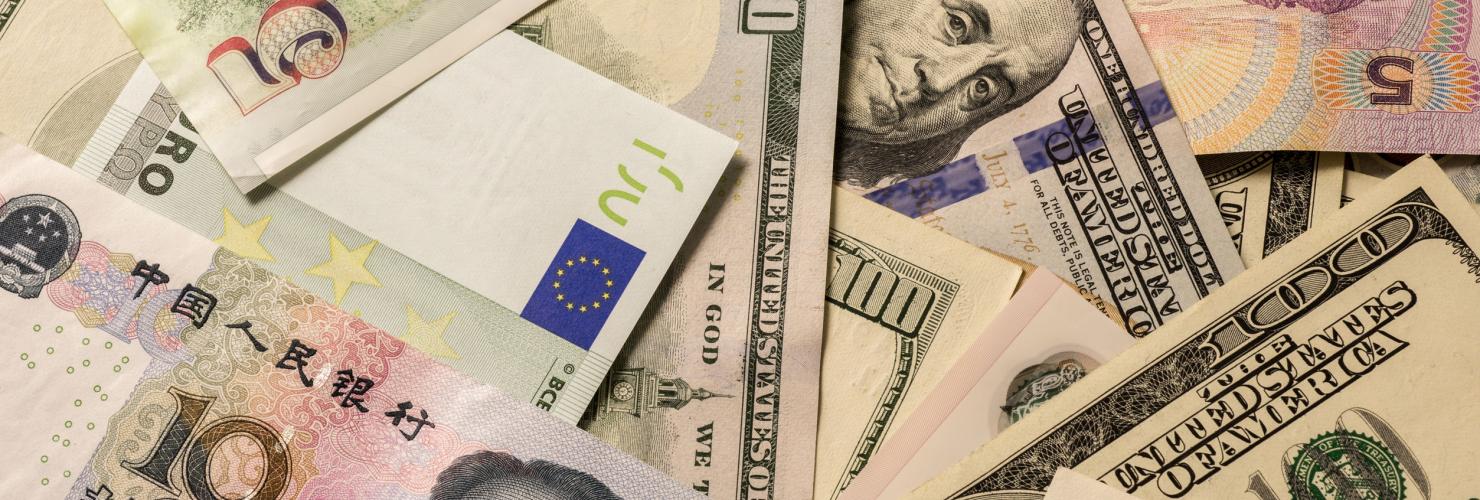

Europe’s renminbi dilemma
China is pushing for its currency to be used all over the world and its renminbi trading infrastructure is particularly good in the European Union. Maximilian Kärnfelt says this looks set to bring the Europeans real commercial benefits – and create real geopolitical problems.
Over the past decade, Beijing has attempted to promote its currency by making it easier for foreign investors to buy renminbi and RMB-denominated financial products. Aside from Hong Kong, the resulting rise of the RMB’s international popularity has been most marked in Europe, which accounts for one in ten cross-border RMB transactions. For the region, this is a mixed blessing – it could reap commercial benefit and encounter major strategic risks.
Receiving commercial payments in RMB is no longer as unattractive as it used to be. It is now much easier for international businesses to convert RMB-denominated earnings into interest-bearing financial products. This development has been driven largely by China opening its financial markets to Europe by establishing trading infrastructure in the region.
In European financial centers, stock exchanges trading Chinese securities, market-connect mechanisms linking to Chinese exchanges, and RMB clearing banks have sprung up. European business can now settle RMB payments using clearing banks in the UK, France, Luxembourg, Germany, and Switzerland; European bourses are sponsoring special China-exchanges for Chinese securities, like the China Europe International Exchange that runs on Deutsche Börse’s platform; in June 2019, the London-Shanghai Stock Connect was launched.
Europe is second only to Hong Kong when it comes to global cross-border renminbi transactions
As a result, Europe in 2019 was second only to Hong Kong when it came to global cross-border RMB transactions. It cleared 9.8 percent against Hong Kong’s 75.5 percent and there is every reason to think Europe’s market share will continue to rise. Much of the European RMB-trading infrastructure described above has only recently been put into place. Given EU-China trade links, this new financial infrastructure looks set to become more popular.
Europe will likely reap commercial benefits in the form of increased exports to China. Chinese companies do not have unlimited access to foreign currency with which to pay European counterparts. They will increasingly be able to use RMB instead as it becomes easier for European businesses to invest RMB-earnings in RMB-denominated financial instruments. The flow of goods from Europe to China should pick up as a result and bolster the European economy just as it starts to work through a phase of more sluggish growth.
Yet Europe also has reasons to be wary of deepening its financial ties with China. Increasing financial integration will lead to increasing use of the RMB, which will make it far easier for the Chinese state to finance its global economic objectives. China is getting economically ever more active outside its own borders: It is purchasing foreign high-tech companies to secure its future dominance in key industries, and it is bringing large parts of the world closer together through infrastructure investments as part of its Belt and Road Initiative.
Currently, The Chinese economy contributes almost 16 percent of global GDP, while its currency’s share of global cross -border transactions is tiny, around two percent. One result is that China still has to finance most of its foreign projects with US Dollars. But, as the RMB becomes more readily accepted outside of China, this will change. It will China far greater leeway to act outside its borders as a result of being able to use its own currency.
Historically, great powers have had currencies accepted around the globe
Historically, great powers such as the US – and even the UK before that – have had currencies that were widely accepted around the globe. They used the power of their currency to wield influence and finance interventions. This power is something that China still lacks, but its many efforts to change this situation do seem to be bearing some fruit.
With China keen to build more RMB-trading infrastructure beyond its borders, European policy makers must be aware of the tradeoff they face between commercial benefits and political costs to the region. More RMB-trading infrastructure will deepen economic ties, raise RMB-use – and bring China another step towards being a financial superpower.
How Europe should react largely depends on which view on the Sino-European relationship will come to prevail in the region. Are Europe and China powers on a collision course, like the US and China? Or are Europe’s and China’s spheres of influence geographically and geopolitically so far apart that there is nothing to fear from a more powerful China?
Hawkish Europeans would answer that helping China to grow the use of the renminbi is not advisable, and that further moves by Beijing should be resisted. Dovish Europeans would argue that there is little to fear from trade and more trading infrastructure. And both will probably partly prevail Europe will rightly or wrongly increasingly see China as a rival. But as a highly decentralized entity, it will not be able to distill its worries into a coherent policy of disengagement. Europe will continue deepening its economic ties to China and the RMB.
For more on the topic, read the MERICS China Monitor “China’s Currency Push” by Maximilian Kärnfelt.